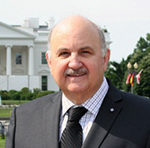By Shoshana Bryen and Stephen Bryen


WASHINGTON, D.C. — It is hard to explain why Bashar Assad used nerve gas — probably Sarin — in the town of Khan Sheikhoun in Syria’s northern Idlib province. On the surface, at least, it would seem to be a totally counterproductive and reckless move likely to anger the Europeans, the Americans, and even his patrons the Russians. Then why would he do it?
It was a surprise, coming as it did immediately after U.S. Ambassador Nikki Haley announced that “regime change” in Syria was no longer a priority and the U.S. focus would be on ISIS. This was a major change from the Obama administration and should have reassured Assad that he could hang on as ruler of Syria. But some pundits saw the U.S. policy shift as a perverse incentive for Assad, making it possible for him to believe he could use highly lethal chemical weapons without fear of retaliation. The Sarin would thus be a test of whether the new policy was real. To some degree, the announcement by the British prime minister that the UK had no retaliatory plans despite the attack might seem to be evidence for this argument.
It is a considerable stretch, though, to think Assad would use chemical weapons to test an American policy shift, particularly because this particular shift would have helped Assad and the Alawite minority cut a final deal that preserved their domination. It is doubtful that is the explanation.
The more likely truth is that Assad was deeply afraid that the U.S. policy shift was part of a secret deal with the Russians, one that he had to head off.
In 2014, after the first documented government use of chemicals against the Syrian population, Russia and the United States struck a deal for the removal and liquidation of Assad’s Sarin and other chemical stocks. Part of the importance of the deal lay in the fact that it was negotiated directly between Russia’s foreign minister and America’s secretary of state, making Russia and the United States the high-level guarantors of Assad’s compliance. There was not much compliance, actually — UN Secretary General Ban Ki Moon said chemical stocks remained and 5 of 12 chemical plants were still operating months after the disposal was supposed to have occurred. But regardless of what they knew (and regardless of Assad’s use of chlorine gas), the deal was considered a success until Khan Sheikhoun. This first use of Sarin since the agreement poses a direct challenge to both countries, but especially to Russia.
Why? The answer is that Assad, as paranoid as he surely is, suspected that the administration’s announcement on regime change policy was an opening bid by the United States to cut a deal with the Russians on a general Syrian settlement. Syrian policy makers could easily construe the FBI’s ongoing investigations in Washington as proof of a Trump-Putin alliance. And that would be terrifying.
Russia has been looking for a way out of the Syrian war that would preserve Russian bases and political power. But its attempt to get a deal failed when both the regime and the rebels basically disowned the idea of a negotiated settlement. In addition, Russian support for Kurdish autonomy in Syria angered Assad almost as much as it did Turkey. From Assad’s point of view, he is hostage to the whims of the Russians and their surrogates, primarily Iran. He may see his regime being sold out, or Syria cantonized into ethnic enclaves (which was actually Russia’s plan), which would appear to him ever more likely if the U.S. and Russia were colluding.
Even the Syrians read newspapers, and they could conclude (as the Democrats in the U.S. and some Republicans like John McCain are trying hard to promote) that President Trump is in league with Putin. In Syria, conspiracies are the staff of life, mother’s milk, the air you breathe — even if they are nonsense.
The Russians have been scrambling to come up with some way to explain how the Sarin came to be used, first claiming there were no Syrian government planes in the area. If that were the truth, the Russians would have brought out radar track maps (easily available) to prove their case. No tracks, no planes. One can assume the Russians did not show evidence because it would did not support the claim.
It took the Russians nearly 48 hours to come up with what they believed might be a plausible argument — for the gullible, at least. Essentially acknowledging Syrian aircraft in the region, they said a Syrian rocket hit a warehouse where the rebels were stockpiling chemical weapons. The chemicals then leaked, killing the civilians in Khan Sheikhoun. So far at least, most governments and the UN have rejected the story as unconvincing and fabricated. In practical terms, nerve gas dissipates fairly quickly and is not persistent — and there is scant evidence that the rebels in Syria have any. And that would not account for the subsequent attack on a hospital treating victims of the Sarin attack.
Considered from this angle, Assad’s return to bombing targets with Sarin nerve gas may have been intended to demonstrate independence from both superpowers and make it nearly impossible for an engineered settlement to be imposed on the regime. With the U.S. angry and up in arms, and the Russians forced to defend their indefensible client, the sacrifice of some hapless civilians could have been, in Assad’s view, a cynically effective way to hold off the dogs. For now.
*
Shoshana Bryen is senior policy director of the Jewish Policy Center. Stephen Bryen, her husband, is a former U.S. Defense Department deputy undersecretary. This article initially appeared in the American Thinker.